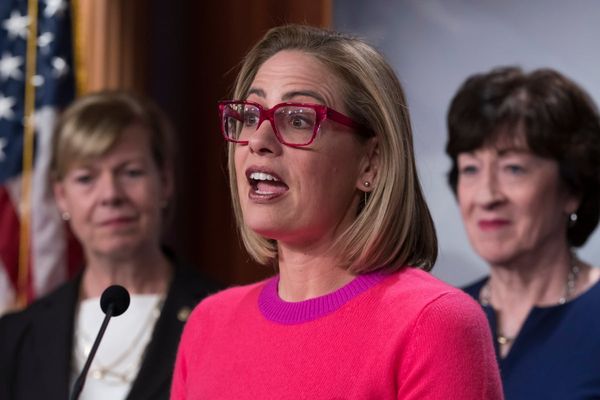Welcome to the Tuesday, March 7, Brew.
All week, we will be celebrating Ballotpedia’s 15th Anniversary by bringing you the top 15 political stories to keep an eye on this year.
Today, we tackle some of the most high-profile statewide elections in 2023.
Here’s what’s in store for you as you start your day:
- Control of the Wisconsin Supreme Court at stake in most expensive judicial election in U.S. history
- Virginia General Assembly elections will determine state’s trifecta status
- A crowded field for Kentucky governor
- Louisiana’s first open gubernatorial election since 2015
Control of Wisconsin Supreme Court at stake in most expensive judicial election in U.S. history
On April 4, Wisconsin voters will decide the ideological balance of their state supreme court, choosing between Milwaukee County Circuit Judge Janet Protasiewicz and former Justice Daniel Kelly.
While Wisconsin’s supreme court elections are officially nonpartisan, PBS Wisconsin’s Zac Schultz wrote, “Protasiewicz and Kelly are heavily aligned with the Democratic and Republican parties, respectively.”
The winner will succeed retiring Justice Patience Roggensack, a member of the court’s current 4-3 conservative majority. If Protasiewicz wins, the court will switch to a 4-3 liberal majority. If Kelly wins, the conservative majority will remain.
The Milwaukee Journal Sentinel’s Molly Beck wrote that candidates and satellite groups have already spent at least $18 million in the race through the end of February. That makes this the most expensive judicial election in U.S. history, breaking a $15 million record set in a 2004 election to the Illinois Supreme Court.
That spending includes the primary campaign that got us where we are today.
Protesiewicz and Kelly advanced from a four-candidate primary on Feb. 21 with 46.5% and 24.2% of the vote, respectively.
The other candidates included Waukesha County Circuit Judge Jennifer Dorrow, a conservative candidate, and Dane County Circuit Court Judge Everett Mitchell, a liberal candidate. Dorrow received 21.9% of the vote, and Mitchell received 7.5%.
The liberal candidates—Protasiewicz and Mitchell—received 54.0% of the primary vote, and the conservative candidates—Kelly and Dorrow—received 46.1%.
Wisconsin media has identified abortion policy, election administration, and legislative redistricting as some of the legal topics the court could address in the future. Wisconsin currently has a divided government: Democrats control the governorship, and Republicans control both legislative chambers.
Protsiewicz said, “We’re saving our democracy in the state of Wisconsin … I’m talking about the ability to vote, to have a vote that counts about women’s rights, reproductive freedoms, the fact that the 2024 presidential election results could likely come into our Supreme Court chamber, just everything people care about.”
Kelly said, “[Voters] want to have someone who has a proven public record of being faithful to the constitution and to the people of Wisconsin. And I see my record as doing that. And I think that’s what makes the difference.”
Barring any vacancies in the interim, the next supreme court election in Wisconsin will be held in 2025 when Justice Ann Walsh Bradley’s term expires. Walsh is a member of the court’s current liberal minority.
Virginia General Assembly elections will determine state’s trifecta status
Virginia is one of four states—along with Louisiana, Mississippi, and New Jersey—holding legislative elections this year.
For the first time since 2019, all 140 legislative districts are holding elections: 40 in the Senate and 100 in the House.
Virginia is one of two states where both major parties control one chamber. Democrats have controlled the Senate since 2019 and enter the election with a 22-18 majority. Republicans have held a 52-48 majority in the House since 2021. This—plus the state’s Republican Gov. Glenn Youngkin, whose term ends in 2025—gives the state a divided government.
If Democrats hold the Senate and regain control of the House, Virginia will continue to have a divided government. If Republicans win the Senate and hold the House, the state will have a Republican trifecta.
Control of the General Assembly also affects the state’s judicial makeup since Virginia is one of two states where legislators elect members to the state supreme court.
According to CNalysis’ initial forecast, both chambers are rated Tilt Democratic. The outlet reports that most districts are rated either Solid Democratic or Republican, meaning candidates from those parties are heavily favored. This leaves just a handful of likely, leaning, and toss-up races to decide the overall outcome.
These are also the first legislative elections in Virginia since redistricting. In 2020, voters approved a constitutional amendment establishing a redistricting commission. But this commission missed the required deadlines to submit new maps. The state supreme court assumed control, selecting one Democratic and one Republican consultant to produce proposals. The court approved new maps on Dec. 28, 2021.
Over the past 30 years, control of the state Senate has changed seven times and control of the state House has changed four times.
The graphs below show the partisan balance after each election—shown as dots—since 1991. They are also shaded to show periods of control over time: blue for Democratic, red for Republican, and purple for power-sharing agreements. The values for 2023 show each chamber’s current makeup.
A crowded field for Kentucky governor
Voters in Kentucky will elect a governor this fall—but exactly who ends up on the November ballot will depend on the state’s May 16 primaries.
Incumbent Gov. Andy Beshear (D) faces two opponents—Peppy Martin and Geoff Young—in the Democratic primary. Beshear was first elected in 2019, receiving 49.2% of the vote to then-Gov. Matt Bevin’s 48.8%. Beshear previously served one term as attorney general from 2015 to 2019.
There are 12 candidates running in the Republican primary, including Attorney General Daniel Cameron, Auditor Mike Harmon, Agriculture Commissioner Ryan Quarles, and former U.S. Ambassador to the United Nations Kelly Craft.
Along with Kansas, Louisiana, and North Carolina, Kentucky is one of four states with a Democratic governor that former President Donald Trump (R) won in 2020. Trump defeated Joe Biden (D) 62% to 36%.
Despite its Republican streak in presidential elections, Democratic governors have led Kentucky for 64 of the past 76 years. The state has only elected three Republican governors since World War II, each serving single terms from 1967 to 1971, 2003 to 2007, and 2015 to 2019.
The outcome of this election will determine the state’s trifecta status for at least the next year (with legislative elections scheduled for 2024). The state currently has a divided government: Democrats control the governorship, and Republicans control both legislative chambers.
If Democrats retain the governorship, Kentucky will remain a divided government. If Republicans win control, the state will become a Republican trifecta.
Louisiana’s first open gubernatorial election since 2015
For the first time since 2015, there will not be an incumbent on the gubernatorial ballot in Louisiana. Incumbent John Bel Edwards (D), first elected in 2015 and re-elected in 2019, is term-limited.
Louisiana uses a unique majority-vote electoral system. Every candidate appears on the same primary ballot, regardless of party affiliation. This isn’t entirely uncommon—Alaska, California, and Washington have similar systems. But unlike those states, any candidate in Louisiana can win outright with 50% of the primary vote. Otherwise, the top-two vote-getters advance to a general election.
The last two gubernatorial elections both advanced to November. In 2019, Bel Edwards received 47% of the vote in the primary and won 51% in the general election. In 2015, the most recent open race, Bel Edwards received 40% of the vote in the primary and won with 56% in the general election.
Louisiana also has a unique election calendar, with most activity happening towards the end of the year. The filing deadline isn’t until Aug. 10, the primary is set for Oct. 14, and the general election, if needed, will be on Nov. 18.
As of March 6, Ballotpedia has identified eight gubernatorial candidates—two Democrats, five Republicans, and one independent—including several members of state government: Transportation and Development Secretary Shawn Wilson (D), state Sen. Sharon Hewitt (R), Attorney General Jeff Landry (R), state Rep. Richard Nelson (R), and Treasurer John Schroder (R).
Like Kentucky above, Louisiana is one of four states with a Democratic governor that former President Donald Trump (R) won in 2020. Trump defeated Biden 59% to 40%.
Since 1980, Democrats have won five gubernatorial elections, and Republicans have won six.
The outcome of this election will determine the state’s trifecta status for at least the next year (with legislative elections scheduled for 2024). The state currently has a divided government: Democrats control the governorship, and Republicans control both legislative chambers.
Learn More






